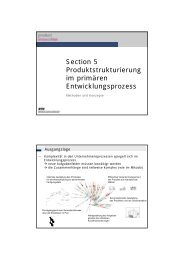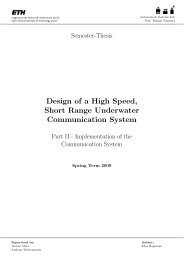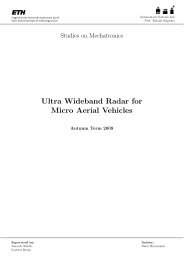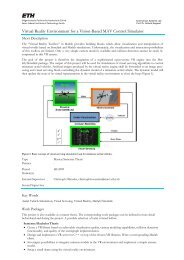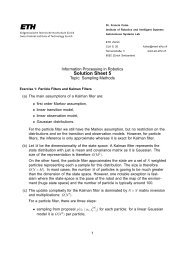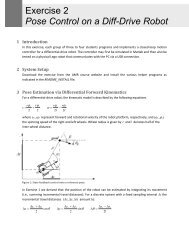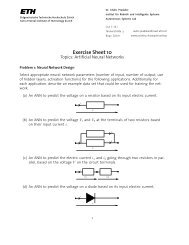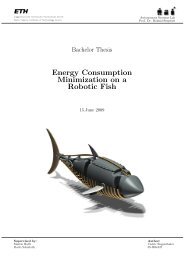Multi Level Surface Mapping using Sparse Point Clouds - Student ...
Multi Level Surface Mapping using Sparse Point Clouds - Student ...
Multi Level Surface Mapping using Sparse Point Clouds - Student ...
Create successful ePaper yourself
Turn your PDF publications into a flip-book with our unique Google optimized e-Paper software.
Chapter 6. Result discussion 32<br />
quadrotors width by analyzing the map. In this Birmensdorf set, the quadrotor<br />
seems to be 0.15 wide - about the same size as the cells in the surface map. With<br />
maxGap set to 0.15, the hole plastering algorithm will therefore only close gaps of<br />
one cell size width. Now to still get a good feeling of how the environment looks<br />
like, the maxGapEnhanced parameter is set to 0.75 to also close gaps which are up<br />
to 5 cell sizes wide. This final result is shown in image 6.3.<br />
Figure 6.2: <strong>Surface</strong> map of Birmensdorf set with partial hole plastering<br />
Figure 6.3: <strong>Surface</strong> map of Birmensdorf set with all optimizations, viewed from two<br />
different perspectives<br />
In this final result we can see a lot of red points. Those points mark the surface<br />
patches, which were additionally inserted by the hole plastering algorithm since the<br />
last shown MLS map output. So all these patches were used to plaster holes and<br />
gaps which were larger than 0.15 and smaller equal 0.75. In the MLS framework,<br />
these surface patches are also marked for later use with a flag called FlagArtifical.<br />
With this marking we can always keep track of areas which were inserted unjustly.<br />
It’s possible, that those really are closed areas, but they could also be open. And<br />
based on the fact, that these closed gaps were larger than the quadrotor, it would



